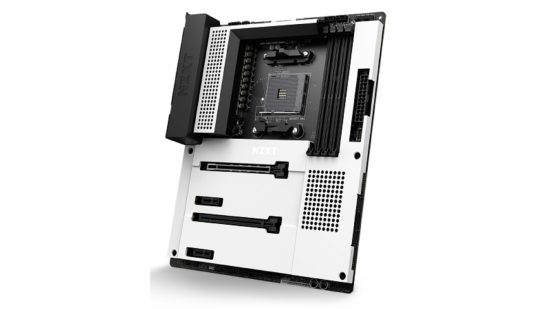We recently reviewed the NZXT N7 B550 motherboard, which is good-looking, has a unique design and it isn’t outrageously priced either.
While it’s essentially a rebadged ASRock motherboard, and not actually manufactured by NZXT, its considerably different design compared to other motherboards got me thinking. What do we actually need or even want from modern motherboards, and how can manufacturers stay ahead of the curve? Do they even have too many features now?
One of the more interesting features of the N7 B550 was its ability to tie its fan control into NZXT’s CAM software, which can link components such as USB-enabled liquid coolers, RGB lighting and fans together in a single control suite.
It’s by far the best software I’ve used within Windows for doing this job, and while it might not have as many options as the likes of Gigabyte’s motherboard software, it’s far cleaner and easier to use.
Of course, NZXT is also hoping to persuade you to buy into its ecosystem with a Kraken liquid cooler here, but Asus, Gigabyte and MSI all have their own liquid coolers now and none of them manages to offer such a slick interface. I’d go as far as saying that I didn’t even mind the N7 not having a fan control suite in the EFI as a result, which surprised me.
Then there’s the design. There were certainly a few issues with the large shrouds, specifically the ones that covered the M.2 ports. Replacing them after installing your SSD would see temperatures skyrocket quickly, resulting in throttling under heavy loads.
Making these shrouds act as heatsinks would likely fix the issue, but I also appreciate the bold design and extensive details on both the black and white versions of the board.
The inside of the box is markedly different from usual too. It’s a decidedly minimalistic affair, with less of the faff and childish additions you’ll see with other boards, such as stickers, cup mats and other rubbish you’ll likely never use. NZXT even ditched the paper manual and instead gives you a QR code to view it online.
This is a great idea, as I regularly look at the manual of motherboards online, since it’s quicker and easier than finding a motherboard’s box and sifting through dozens of pages in a paper manual. I’m amazed other motherboard manufacturers haven’t done this, as it must cut costs.
Other motherboard makers all seem obsessed with filling the box with as many pointless accessories as possible, instead of offering genuinely useful gubbins. A few include USB sticks with drivers on them instead of a CD, but this would have been more useful a decade ago.
With AMD and Intel moving to new sockets in the not-too-distant future, I hope that motherboard manufacturers take the opportunity to have a long hard look at their current products and take a leaf out of NZXT and ASRock’s book.
